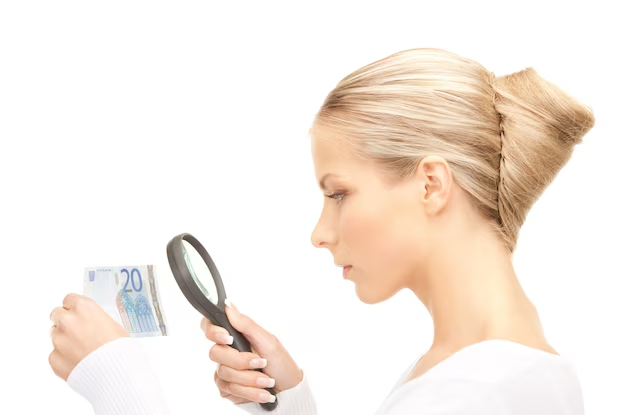How to Recognize the Signs of Skin Cancer and What Steps to Take Next
Have you ever noticed a strange spot on your skin and wondered what it could be? With an increasing awareness of skin cancer, it's natural to be cautious about any changes or unusual appearances on your skin. But how do you know if that spot is something to be concerned about? Let's delve into how you can recognize potential signs of skin cancer, when it’s time to consult a healthcare professional, and how you can best protect your skin for the future.
Understanding Skin Cancer: The Basics
Before identifying potential signs of skin cancer, it's essential to understand what skin cancer is. Skin cancer occurs when skin cells grow uncontrollably. It’s crucial to know about the most common types of skin cancer:
- Basal Cell Carcinoma (BCC): The most common form, usually appearing as a pearly bump or flesh-colored mole.
- Squamous Cell Carcinoma (SCC): Often looks like a red, scaly patch or sore that heals and then reopens.
- Melanoma: The deadliest form, recognized by asymmetrical moles with irregular borders, multiple colors, and changes in size or shape.
Each type has distinct characteristics, but they all require early detection for the best outcomes.
Identifying the Signs: What to Look For
Catching skin cancer early can dramatically impact treatment success. Here are some key signs to look for:
The ABCDEs of Melanoma
When examining moles or spots, remember the ABCDE rule:
- A for Asymmetry: One half doesn't match the other.
- B for Border: Edges are irregular or blurred.
- C for Color: The color isn't uniform; you may see varying shades of brown, black, red, white, or blue.
- D for Diameter: The spot is larger than 6mm (about 1/4 inch, or the size of a pencil eraser).
- E for Evolving: The mole changes in size, shape, or color over time.
Other Warning Signs
- Sores that don't heal within a few weeks.
- Red or brown patches that are rough or scaly.
- Lesions that itch, hurt, or bleed.
- New growths or changes in existing moles or spots.
Who Is at Risk for Skin Cancer?
While anyone can develop skin cancer, certain factors can increase your risk:
- Sun Exposure: Frequent sunburns and time spent under the sun.
- Tanning Beds: Usage can significantly increase the risk.
- Family History: Genetics can play a role.
- Skin Type: People with fair skin, light hair, and light eyes are at increased risk.
- Age: Risk increases as you age.
Understanding these risk factors can help you assess your susceptibility and encourage proactive skin health measures.
What Should I Do If I Suspect Skin Cancer?
If you notice changes or symptoms that match the signs above, it’s time to take action. Here are steps you can consider:
- Self-Examination: Regularly perform a full-body skin check, ideally once a month.
- Medical Consultation: Schedule an appointment with a dermatologist for a professional evaluation.
- Documentation: Take clear photos of the spot over time to track changes.
- Stay Informed: Educate yourself about skin cancer and prevention strategies.
Prevention: Your Best Defense
While early detection is crucial, prevention can be your best ally against skin cancer. Here are actionable steps you can take:
Sun Safety
- Use Sunscreen: Apply a broad-spectrum SPF 30+ sunscreen 30 minutes before going outside and reapply every two hours.
- Wear Protective Clothing: Prefer long sleeves, hats, and UV-blocking sunglasses.
- Seek Shade: Especially between 10 a.m. and 4 p.m., when UV rays are strongest.
- Avoid Tanning Beds: They pose significant risks and can enhance your odds of developing skin cancer.
Regular Dermatologist Visits
Establishing routine dermatologist check-ups can lead to early detection. A healthcare professional can monitor moles and skin changes more accurately.
A Journey Toward Awareness and Prevention
Understanding the risks and signs of skin cancer empowers you to make informed decisions about your skin health. Remember, early detection is crucial, and adopting preventative strategies can make a world of difference. Be proactive in examining your skin and consulting professionals when changes occur. Stay vigilant and protect the skin you’re in—it’s your body’s largest organ and deserves keen attention.
Quick Reference Guide: Skin Cancer Awareness
- 👀 Watch for changes using the ABCDE rule.
- 🚨 Spot risk factors: sun exposure, fair skin, family history, and age.
- ☀️ Protect yourself: use sunscreen, wear protective clothing, seek shade.
- 📅 Regular checks: monthly self-exams and periodic dermatologist visits.
- 📝 Document changes: keep visual records of moles or spots to track changes over time.
Taking these steps will help keep you proactive and informed about your skin health!

Related Articles
- Are Breast Cancer Lumps Painful
- Are Chills a Sign Of Cancer
- Are Colon Spasms a Sign Of Cancer
- Are Lytic Lesions Always Cancer
- Are Polyps Cancer
- Can a Blood Test Detect Cancer
- Can a Ct Scan Detect Cancer
- Can a Dexa Scan Show Cancer
- Can a Gastric Emptying Scan Show Cancer
- Can a Lung Biopsy Cause Cancer To Spread